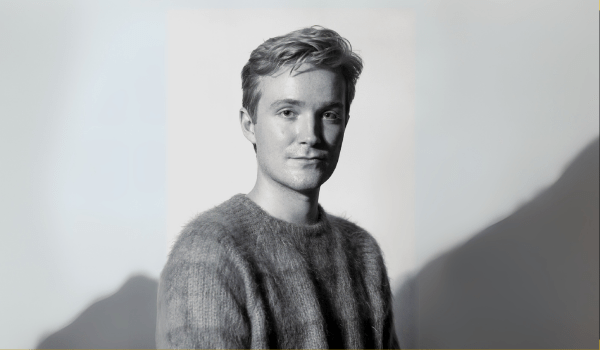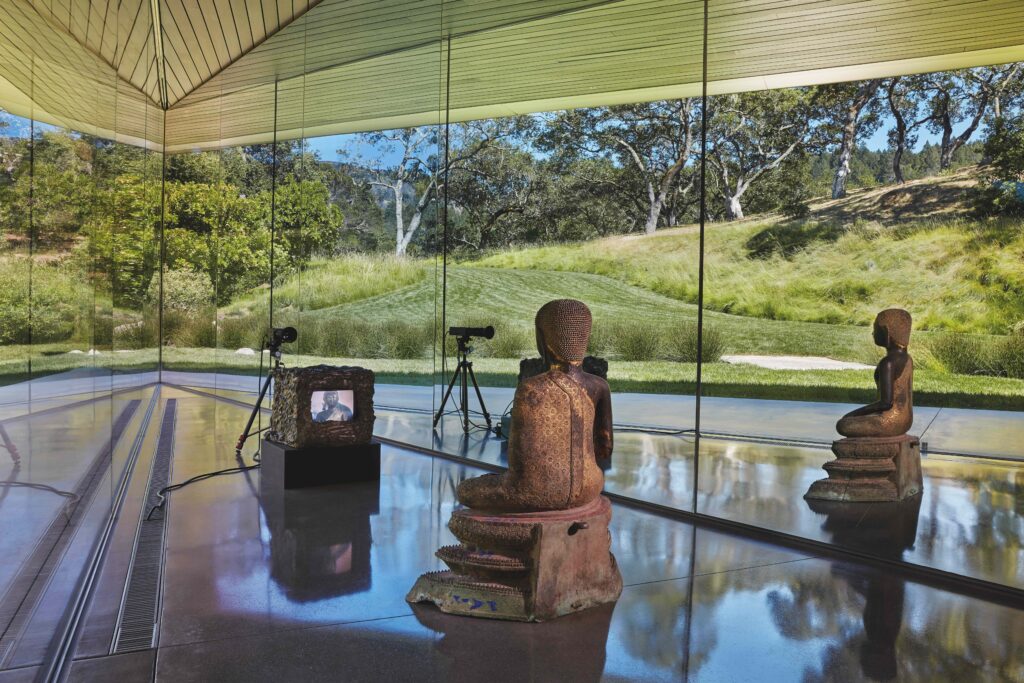Graduate Student Profile: Jeppe Ugelvig
Jeppe Ugelvig is a third-year PhD Candidate in the History of Art and Visual Studies and is a part of the inaugural cohort of the THI Moving Image Lab Yearlong Public Fellows.

Ugelvig is pursuing the fellowship at the Kramlich Collection to hone his creative skills, gain professional experience, and assist with research and exhibition initiatives. We checked in with him hear about how this experience has been so far.
Hi Jeppe, it’s great to get a chance to talk to you and learn more about some of the work you have been doing with the Moving-Image Lab. Before we hear more about that, could you introduce yourself for us and talk a bit about your research?
I am a curator, critic, and a third-year PhD candidate in the History of Art and Visual Studies. I work broadly on the history of 20th-century culture and media industries, with a special focus on the interactions between art and consumer society. This focus leads to a few favorite areas: fashion, advertising, publishing, and television. My dissertation research is on the history of art merchandise: the kind of “art products” you find in museum gift shops and in fashion stores. Alongside my doctoral research, I stage exhibitions in museums and galleries. I also edit my own journal, Viscose.
Thank you for sharing that is fascinating! For those that are unfamiliar, could you talk about the Moving Image Lab and your public fellowship there?
The Moving Image Lab is an initiative led by UCSC faculty Isaac Julien and Mark Nash, both pioneers in the fields of video art and documentary filmmaking. The Lab produces opportunities for UCSC students to pursue research and careers in the world of the moving image.
Artifacts are surrounded by mystery until you suddenly stumble upon treasure troves of information, which is riveting. I have enjoyed many of these moments in the past couple of months.
I am a lucky recipient of a fellowship for the 24-5 academic year, where I am placed at the Kramlich Collection in Napa, CA—one of the most distinguished collections of video art in private hands. During my time there, I am focusing on two areas: researching the collection and developing future exhibition projects and helping the institution define its future in the stewardship of the video art genre.
What drew you to the Kramlich Collection in Napa? Are there particular components of the collection or skills that drew you toward this opportunity?
Few places in the world are as invested in video art as the Kramlich – the collection is as close as you get to a full historical representation of the medium through artworks. This canon of works — by artists such as Bill Viola and Pipilloti Rist – was what motivated me to join the arts at a young age, and I was keen to return to them in a professional and academic context. As historical artifacts, they seem highly relevant: what can video art teach us about the current world, which has become entirely moving image based on countless devices?
From a point of view of preservation, video art constitutes another frontier, as the ambitious technological experimentation meant realizing artworks using media that has since gone extinct. This is a unique challenge for media art and one that is not actively prioritized by many collecting institutions. As a scholar and curator, I was passionate about developing hands-on experience in this field and help push the field forward through proactive stewardship.
What has been a defining moment of the fellowship so far? More specifically, what exciting challenges have you encountered?

Collection research always requires a fair bit of detective work, as available information about particular artworks may be limited. This means consulting academic and journalistic sources, speaking to artist studios and estates, and even galleries and collectors. Artifacts are surrounded by mystery until you suddenly stumble upon treasure troves of information, which is riveting. I have enjoyed many of these moments in the past couple of months.
You shared in your application that you have worked as an art critic in the past. Santa Cruz is often referred to as an artistic community. As someone with extensive experience in the arts, what are some of the artistic characteristics or locations of Santa Cruz?
I would describe Santa Cruz as a regional arts community, which, despite its proximity to San Francisco, exists in a bubble of its own. The community is small, but devoted, and a little goes a long way—whether it’s small performing arts festivals or exhibitions. The efforts of local institutions like Indexical is a case in point—their programming blends local and national forces really compellingly and offers a platform for experimental practice that would often be overlooked elsewhere. That is very inspiring!
